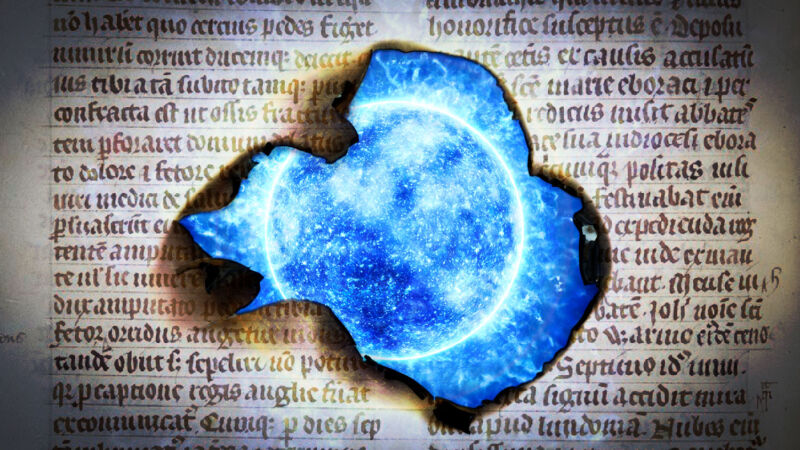
Enlarge (credit: Aurich Lawson | Getty Images | Trinity College)
On October 21, 1638, people were congregating at a church at Widecombe-in-the-Moor, in Devon, England, when a severe thunderstorm broke out. Witnesses described an 8-foot ball of fire hurtling through the church, tossing large stones from the walls to the ground, smashing pews and windows, and filling the church with smoke and the pungent odor of sulfur. Four people died and many more were injured in what has been widely recognized as the earliest known account of ball lightning in England—until now.
A British historian and a retired physicist have found an even earlier credible account of ball lightning in the writings of a 12th-century Benedictine monk, Gervase of Christ Church Cathedral Priory in Canterbury. According to a recent paper published in the journal Weather, Gervase of Canterbury recorded in his Chronicle a “marvelous sign” that “descended near London” on June 7, 1195. The sign was a “fiery globe” emerging from below a dark and dense cloud, and it predates the Widecombe-in-the-Moor account by nearly 450 years.
“Ball lightning is a rare weather event that is still not understood today,” said co-author Brian Tanner of Durham University (emeritus). “Gervase’s description of a white substance coming out of the dark cloud, falling as a spinning fiery sphere and then having some horizontal motion is very similar to historic and contemporary descriptions of ball lightning. If Gervase is describing ball lightning, as we believe, then this would be the earliest account of this happening in England that has so far been discovered.”





